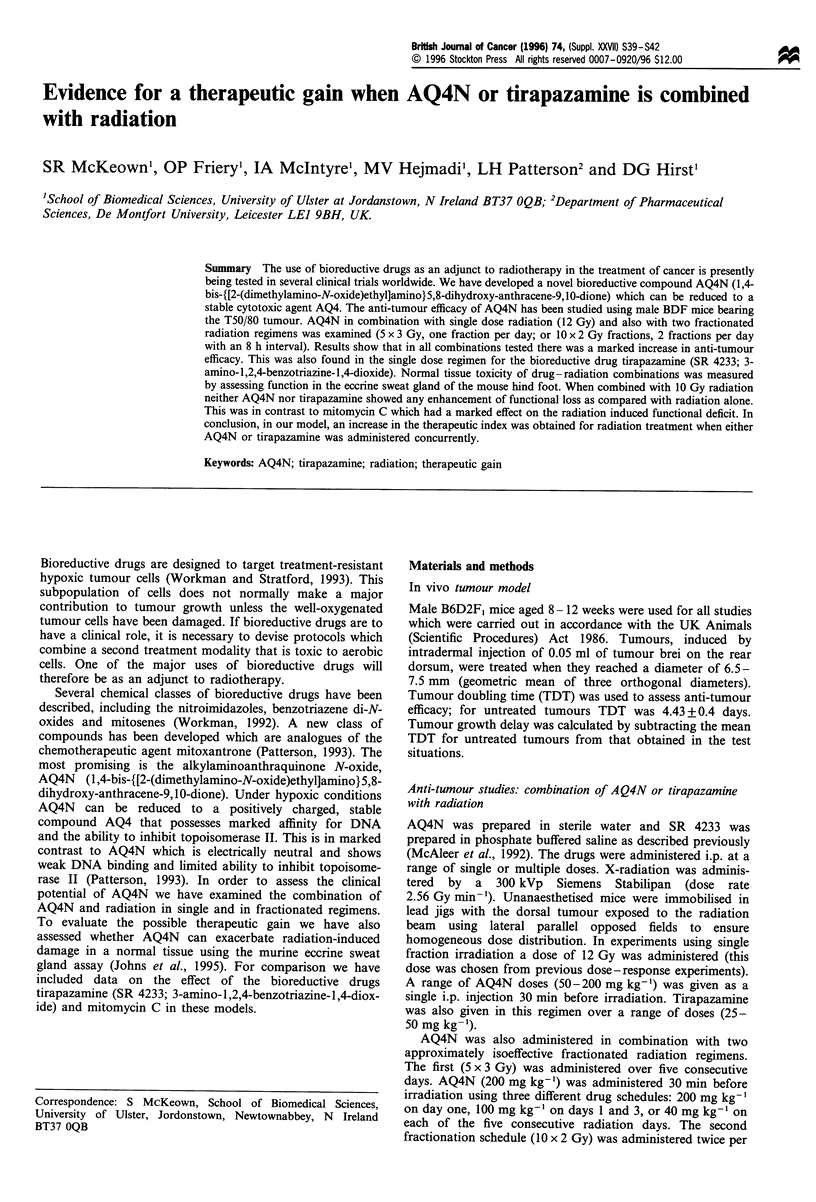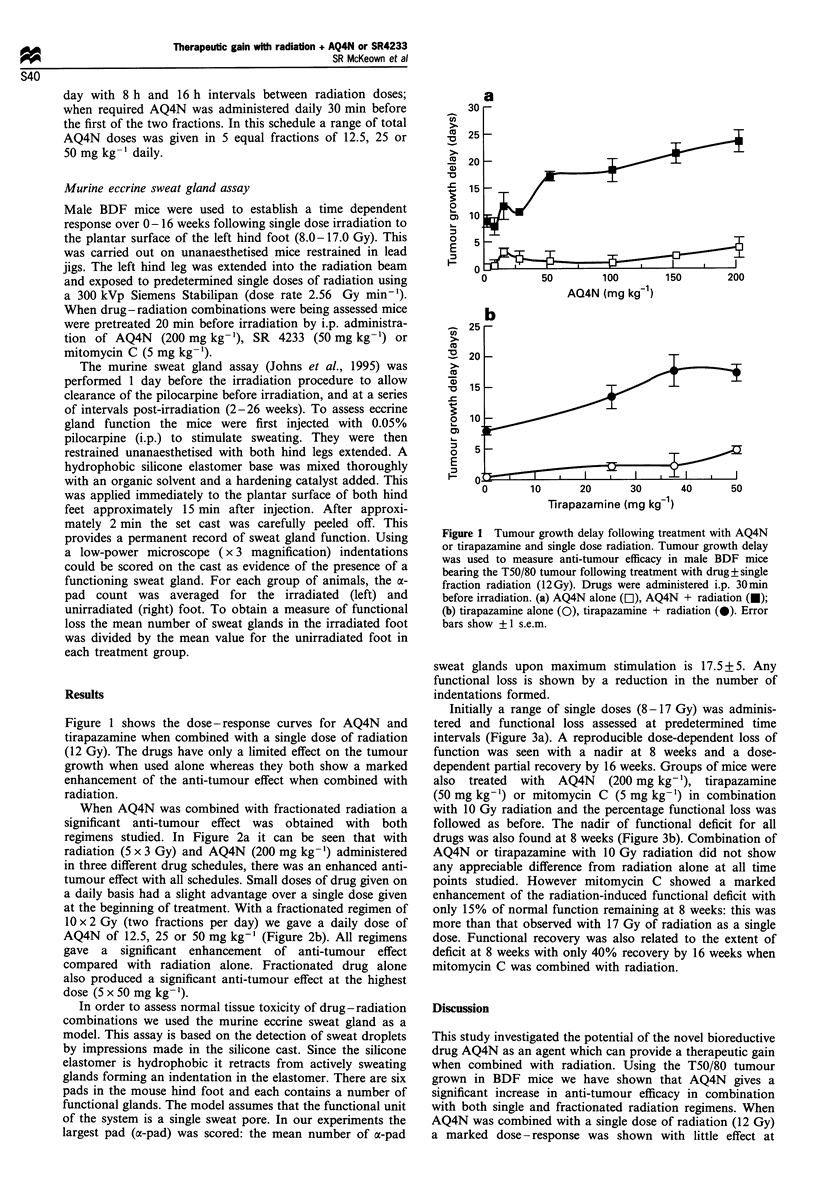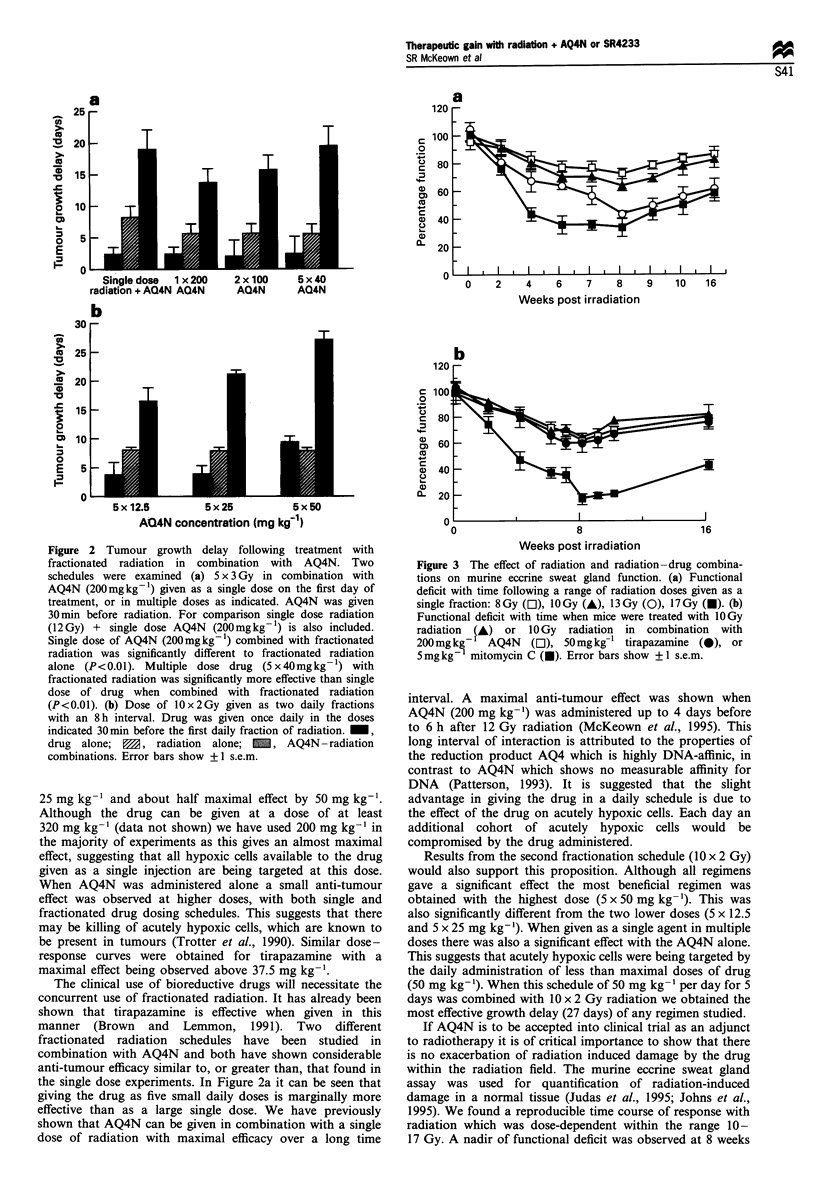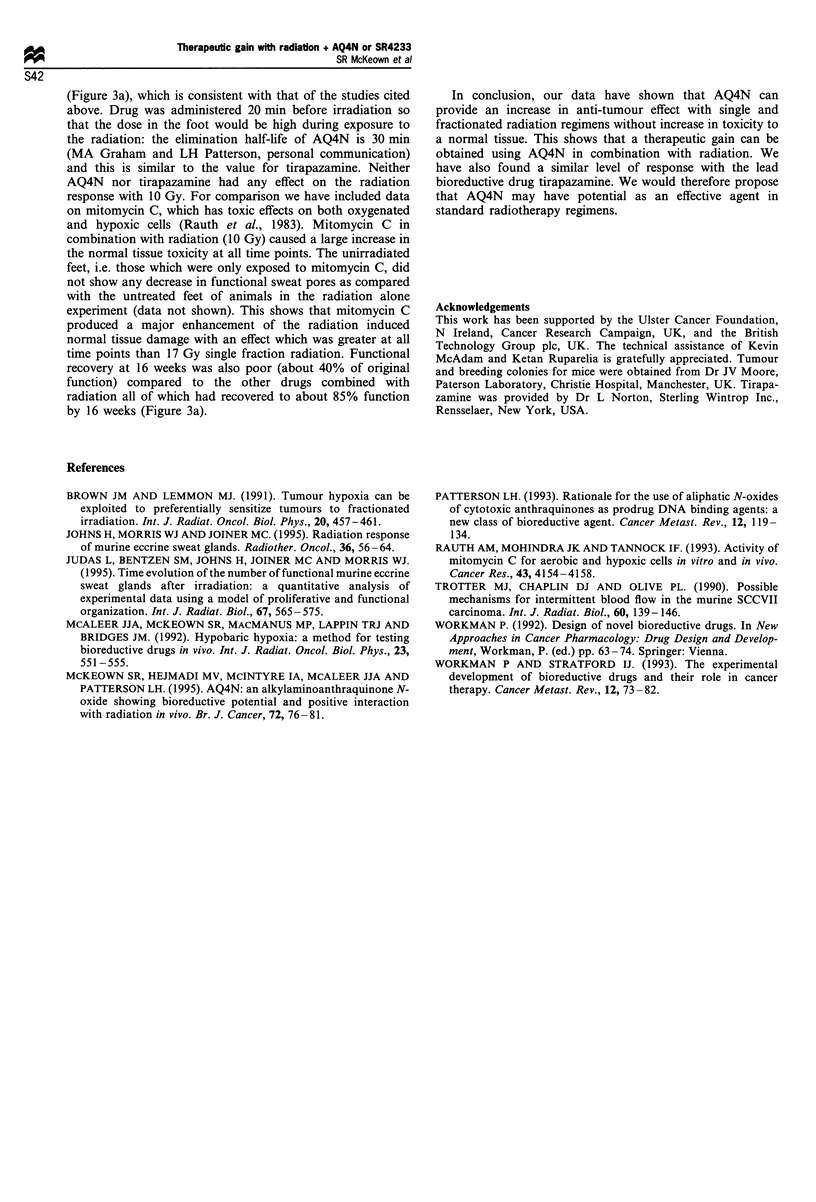Abstract
The use of bioreductive drugs as an adjunct to radiotherapy in the treatment of cancer is presently being tested in several clinical trials worldwide. We have developed a novel bioreductive compound AQ4N (1,4-bis-¿[2-(dimethylamino-N-oxide)ethyl]amino¿ 5,8-dihydroxy-anthracene-9, 10-dione) which can be reduced to a stable cytotoxic agent AQ4. The anti-tumour efficacy of AQ4N has been studied using male BDF mice bearing the T50/80 tumour. AQ4N in combination with single dose radiation (12 Gy) and also with two fractionated radiation regimens was examined (5 x 3 Gy, one fraction per day; or 10 x 2 Gy fractions, 2 fractions per day with an 8 h interval). Results show that in all combinations tested there was a marked increase in anti-tumour efficacy. This was also found in the single dose regimen for the bioreductive drug tirapazamine (SR 4233; 3-amino-1,2,4-benzotriazine-1, 4-dioxide). Normal tissue toxicity of drug-radiation combinations was measured by assessing function in the eccrine sweat gland of the mouse hind foot. When combined with 10 Gy radiation neither AQ4N nor tirapazamine showed any enhancement of functional loss as compared with radiation alone. This was in contrast to mitomycin C which had a marked effect on the radiation induced functional deficit. In conclusion, in our model, an increase in the therapeutic index was obtained for radiation treatment when either AQ4N or tirapazamine was administered concurrently.
Full text
PDF



Selected References
These references are in PubMed. This may not be the complete list of references from this article.
- Brown J. M., Lemmon M. J. Tumor hypoxia can be exploited to preferentially sensitize tumors to fractionated irradiation. Int J Radiat Oncol Biol Phys. 1991 Mar;20(3):457–461. doi: 10.1016/0360-3016(91)90057-b. [DOI] [PubMed] [Google Scholar]
- Johns H., Morris W. J., Joiner M. C. Radiation response of murine eccrine sweat glands. Radiother Oncol. 1995 Jul;36(1):56–64. doi: 10.1016/0167-8140(95)01560-4. [DOI] [PubMed] [Google Scholar]
- Judas L., Bentzen S. M., Johns H., Joiner M. C., Morris W. J. Time evolution of the number of functional murine eccrine sweat glands after irradiation: a quantitative analysis of experimental data using a model of proliferative and functional organization. Int J Radiat Biol. 1995 May;67(5):565–575. doi: 10.1080/09553009514550681. [DOI] [PubMed] [Google Scholar]
- McAleer J. J., McKeown S. R., MacManus M. P., Lappin T. R., Bridges J. M. Hypobaric hypoxia: a method for testing bioreductive drugs in vivo. Int J Radiat Oncol Biol Phys. 1992;23(3):551–555. doi: 10.1016/0360-3016(92)90010-f. [DOI] [PubMed] [Google Scholar]
- McKeown S. R., Hejmadi M. V., McIntyre I. A., McAleer J. J., Patterson L. H. AQ4N: an alkylaminoanthraquinone N-oxide showing bioreductive potential and positive interaction with radiation in vivo. Br J Cancer. 1995 Jul;72(1):76–81. doi: 10.1038/bjc.1995.280. [DOI] [PMC free article] [PubMed] [Google Scholar]
- Patterson L. H. Rationale for the use of aliphatic N-oxides of cytotoxic anthraquinones as prodrug DNA binding agents: a new class of bioreductive agent. Cancer Metastasis Rev. 1993 Jun;12(2):119–134. doi: 10.1007/BF00689805. [DOI] [PubMed] [Google Scholar]
- Rauth A. M., Mohindra J. K., Tannock I. F. Activity of mitomycin C for aerobic and hypoxic cells in vitro and in vivo. Cancer Res. 1983 Sep;43(9):4154–4158. [PubMed] [Google Scholar]
- Trotter M. J., Chaplin D. J., Olive P. L. Possible mechanisms for intermittent blood flow in the murine SCCVII carcinoma. Int J Radiat Biol. 1991 Jul-Aug;60(1-2):139–146. doi: 10.1080/09553009114551731. [DOI] [PubMed] [Google Scholar]
- Workman P., Stratford I. J. The experimental development of bioreductive drugs and their role in cancer therapy. Cancer Metastasis Rev. 1993 Jun;12(2):73–82. doi: 10.1007/BF00689802. [DOI] [PubMed] [Google Scholar]


